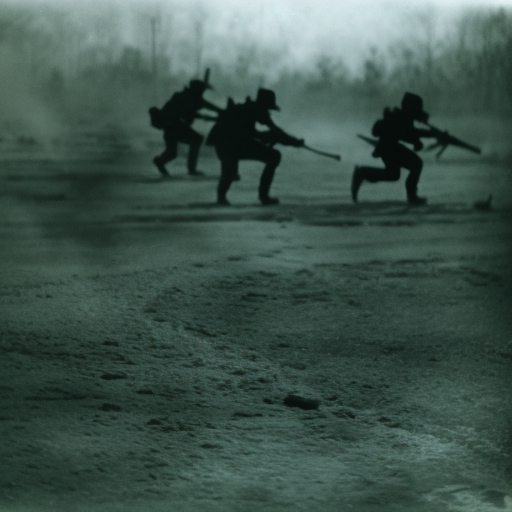Battle of Buna–Gona: A Fierce Struggle in the Pacific Theater of World War II
The Battle of Buna–Gona was a significant military engagement that took place in the Pacific Theater of World War II. Fought between November 16, 1942, and January 22, 1943, it was part of the larger New Guinea campaign. The battle was fought between the Allied forces, primarily consisting of Australian and American troops, and the Japanese Imperial Army.
The Importance of Buna–Gona
Buna and Gona were two small coastal villages located on the northeastern coast of Papua New Guinea. The Japanese had established strong defensive positions in these areas, which were strategically important due to their proximity to the vital Allied base at Port Moresby. The capture of Buna–Gona was crucial for the Allies to secure their hold on the region and protect their supply lines.
The Initial Assault
The battle began on November 16, 1942, with an amphibious assault on the beaches near Buna. The Australian 7th Division, supported by American troops, launched the attack. However, the Japanese defenders put up fierce resistance, utilizing their well-entrenched positions and the dense jungle terrain to their advantage. The Allied forces faced numerous challenges, including difficult terrain, harsh weather conditions, and the tenacity of the Japanese defenders.
The Struggle for Buna
The battle for Buna was marked by intense fighting and high casualties on both sides. The Japanese defenders, under the command of Major General Tomitaro Horii, were determined to hold their ground. The Allies faced significant difficulties in dislodging them from their fortified positions. The fighting was characterized by close-quarters combat, with soldiers engaging in brutal hand-to-hand combat and facing the constant threat of disease and exhaustion.
The Siege of Gona
While the battle for Buna raged on, the Allies also launched an assault on Gona. The Australian 18th Brigade, supported by American troops, attacked the heavily fortified Japanese positions. The fighting was fierce, with the Japanese defenders resisting fiercely. The Allies faced significant challenges, including the difficult terrain and the Japanese’s effective use of defensive positions.
Breakthrough and Victory
After weeks of intense fighting, the Allies finally achieved a breakthrough in late December 1942. The Australian 7th Division managed to capture the key Japanese positions in Buna, while the Australian 18th Brigade made progress in Gona. The Japanese defenders, facing dwindling supplies and mounting casualties, were forced to retreat.
Aftermath and Significance
The Battle of Buna–Gona was a hard-fought victory for the Allies. However, it came at a high cost. The battle resulted in heavy casualties on both sides, with the Allies suffering over 2,400 casualties, while the Japanese lost around 1,200 soldiers. The battle highlighted the challenges of jungle warfare and the determination of the Japanese defenders.
The capture of Buna–Gona was a significant turning point in the New Guinea campaign. It secured the Allied hold on the region and protected their vital supply lines. The battle also boosted the morale of the Allied forces, who had faced numerous setbacks in the Pacific Theater. It demonstrated their ability to overcome the Japanese defenses and marked the beginning of a series of successful offensives in the region.
In conclusion, the Battle of Buna–Gona was a fierce struggle that took place in the Pacific Theater of World War II. The battle was fought between the Allied forces, primarily consisting of Australian and American troops, and the Japanese Imperial Army. The capture of Buna–Gona was crucial for the Allies to secure their hold on the region and protect their supply lines. The battle was marked by intense fighting, difficult terrain, and high casualties. After weeks of fierce combat, the Allies achieved a breakthrough and secured victory. The battle was a significant turning point in the New Guinea campaign and boosted the morale of the Allied forces.












